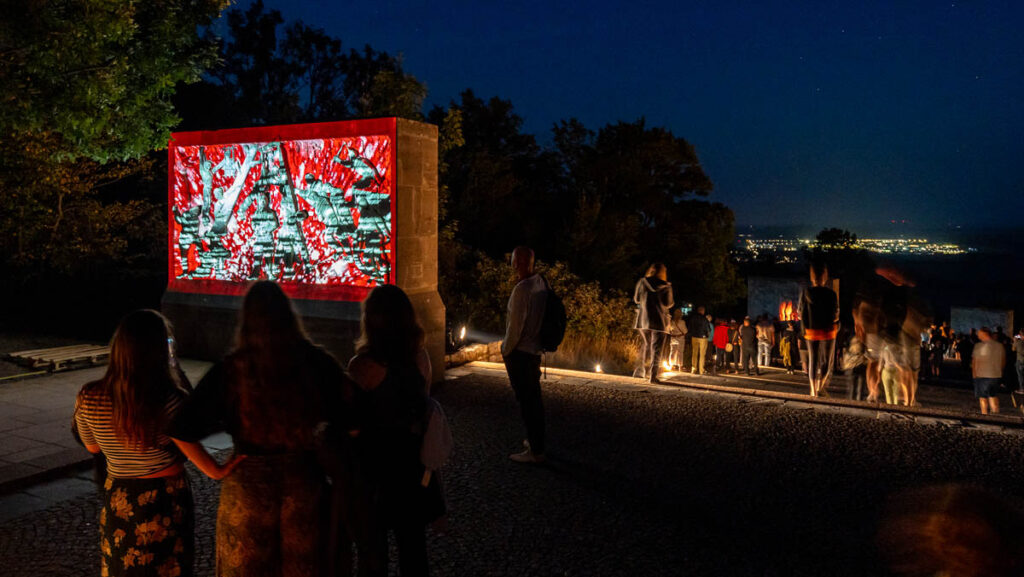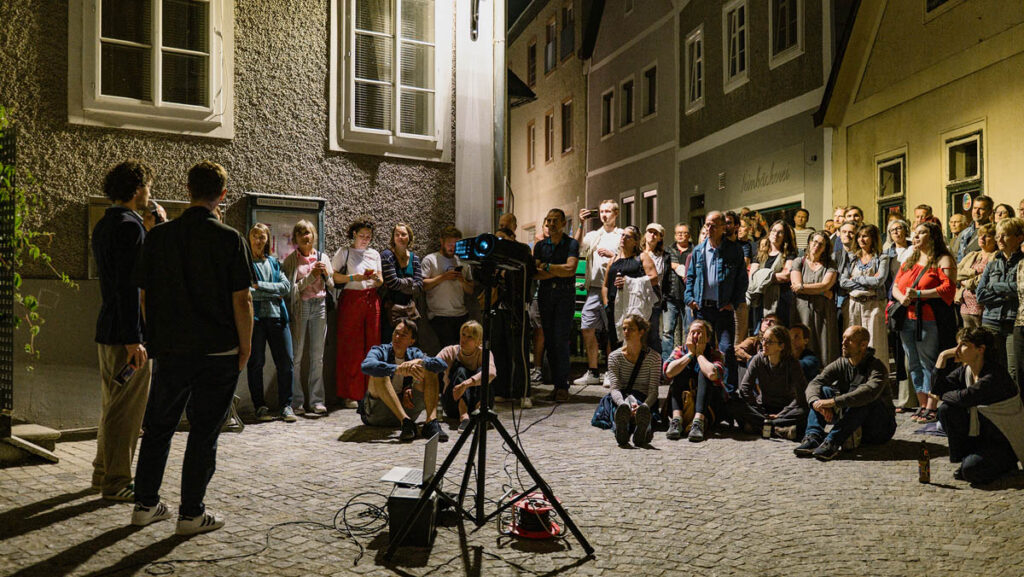
We spoke with the exhibition’s curator, Ronald Kiwitt, who developed the exhibition title „Unbound Signature“ during planning with BMCA and with the artist herself.
Can you tell me more about the title of the exhibition, „Unbound Signature“?
Huang Min: The term „unbound“ conveys a sense of being unrestrained, unrestricted, and free. This exhibition brings together works from different periods of my practice, employing diverse materials and methodologies. In today’s artistic landscape, where new forms of expression and technological advancements dominate, painting may appear somewhat traditional. However, I firmly believe in its irreplaceable value, particularly in terms of emotional depth and the tactile quality of handcrafted work. I have consistently pushed boundaries, experimenting with various materials and formal languages to explore new experiences and possibilities. The curator’s choice of this title demonstrates a profound understanding of my artistic philosophy, for which I am deeply grateful.
Ronald Kiwitt: “Unbound Signature“ refers to Huang Min’s unrestrained painterly energy. Educated at two of China’s foremost art academies, she possesses an inexhaustible drive to express herself and her surroundings through painting, employing a vast array of materials. Her practice encompasses monumental canvases featuring life-sized figurative pairings, delicate watercolors on paper that serve as an intimate painterly diary, and expansive works on porcelain, created in her Jingdezhen studio – a collaborative space she shares with the renowned ceramic artist Ma Jun.
With her boundless creative vigor and relentless pursuit of expression, Huang Min refuses to confine herself to a single medium or mode of painting. It is this very refusal—this sense of artistic liberation—that inspired the title „Unbound Signature“ for her current exhibition.

What works are you presenting in the exhibition? How did you select them?
HM: The curation process was primarily undertaken by Ronald Kiwitt and his team, in agreement with Alexandra Grimmer, Head of the BMCA Foundation. BMCA Collection acquired a substantial body of work from my studio in 2016. For this exhibition, Alexandra made selective choices from these holdings based on careful consideration of the spatial dynamics of the venue. The selection was further augmented with my recent fragmented porcelain work created within the past two years. This thoughtful combination of historical and contemporary pieces creates a particularly rich and cohesive exhibition narrative, a curatorial approach with which I find myself in complete accord.
Is there a work in the exhibition that is especially close to your heart?
HM: Each work in this exhibition represents a sincere artistic endeavor, regardless of scale. When standing before them, one encounters intimate connections to my personal experiences and life journey, each piece evoking distinct recollections. The most significant work is perhaps a small monochromatic painting from 2002. This piece captures the hurried crowds at a Beijing auto exhibition, their expressions vividly conveying material desires during what would later be recognized as the incipient stage of China’s contemporary art boom – the so-called „golden age“ of artistic development.

This work holds dual historical value: firstly, as a sociological document of early consumer culture manifestations in post-reform China, and secondly, as marking a pivotal transitional period in my artistic practice. Notably, this represents its first public exhibition, adding an archival dimension to its presentation. The work serves as both a personal memoir and a cultural artifact, bridging individual experience with broader socio-artistic developments.
Which material or medium currently presents the biggest challenge for you or brings you the most joy?
HM: Oil painting as a medium has consistently presented me with profound challenges and rewards due to its historical legacy, material complexity, and absence of dimensional constraints. The very antiquity of this medium, coupled with its rich mutability and scale-free nature, generates both the greatest creative satisfaction and technical demands in my practice.
This enduring engagement with oil painting stems from my continuous pursuit of developing a distinctive painterly language while simultaneously experimenting with innovative material applications. The dialectic between tradition and innovation inherent in this medium constitutes a central tension in my artistic research – one that compels me to navigate between established techniques and experimental approaches.

Having grown up in Sichuan, what memories of your childhood in this region have stayed with you most vividly?
HM: I spent my childhood in a small mountainous county located in the northeastern part of Sichuan Province. Nestled among hills with a river meandering through it, the city was renowned for its picturesque scenery and abundant production of white fungus. Around the early 1980s, when I was four or five years old, I began learning traditional Chinese painting from my grandfather, Huang Kun, while listening to his stories, including those of his remarkable life experiences. He graduated from Southwest Art College in Chongqing in 1932 and, after 1937, engaged in anti-Japanese propaganda with my grandmother, organizing theatrical performances across the province. In the 1940s, after returning to his hometown, he founded a girls‘ school. However, during the 1960s, due to the political climate and his family background, he was sent to the countryside for labor reform and was not rehabilitated until around 1980.
The formative years of learning under my grandfather’s guidance naturally influenced my decision to pursue studies at the Sichuan Fine Arts Institute. Later, in 2000, I moved from Chongqing to Beijing to continue my education at the Central Academy of Fine Arts. Despite changing circumstances, my passion for painting has remained unwavering to this day.
These cherished childhood memories have become an enduring source of inspiration, accompanying and motivating me throughout my life’s journey.
What does ‚home‘ mean to you: a place, a feeling, or something else?
HM: „Home“ embodies an emotional connection, requiring mutual respect and understanding among family members, irrespective of physical separation. It is a sanctuary that provides love, warmth, comfort, and a profound sense of security.

How has moving between cultures influenced your understanding of identity?
HM: This is an excellent question. Throughout the evolution of human civilization, progress has been driven by continuous interaction and mutual influence among diverse cultures. As inhabitants of the same planet, we share fundamental universal values, including a common humanity, despite the many differences that exist across races, regions, cultures, and customs.
Regarding the inherent question of personal identity, I have never deliberately dwelled on it. In my artistic practice, I primarily draw from my own experiences and inner expression. Navigating different cultural environments, I maintain a mindset of curiosity and respect, embracing them as opportunities for learning and reflection. This approach has profoundly enriched my perspective and creative thinking.
Exhibition: Huang Min 黄敏 – Unbound Signature (Works from the BMCA Collection)
Exhibition Duration: June 14 – July 26, 2025
Address: Kunstraum des Konfuzius-Instituts Nürnberg-Erlangen e.V. Pirckheimerstraße 36, 90409 Nuremberg
www.bmca-art.com
www.konfuzius-institut.de
Huang Min – www.bmca-art.com/huang-min-黄睌





